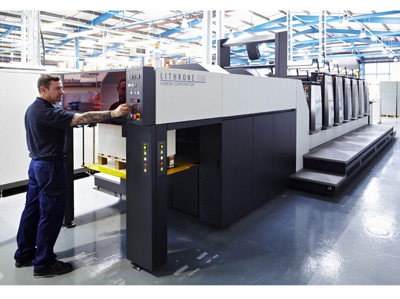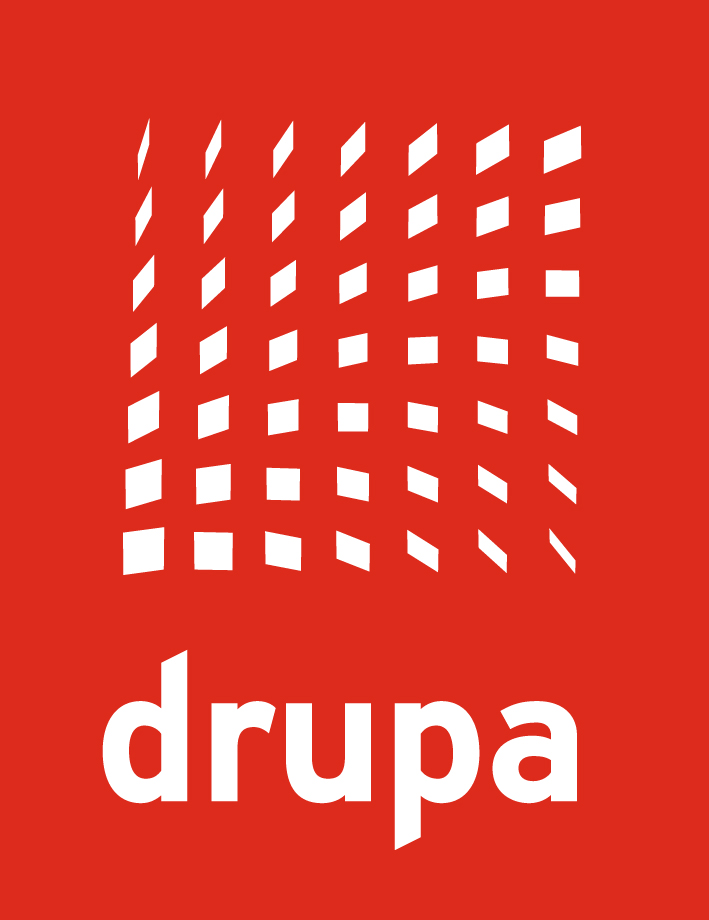Is digital print losing its edge?
Time:2018-05-24 From:
In the past decade we've naturally written a lot about digital printing, but the same period has seen a more subtle revolution in offset litho. Simon Eccles asks if LED-UV litho beats the digital advantage.
The development of LED-UV lamp arrays for ink curing has changed the way litho presses can operate. Large format litho presses with instant drying are being taken seriously as alternatives to digital presses for fast turnround work, typically for B2B and B2C web-to-print ordering operations.
While UV-cured litho presses have been around for decades, the original models used mercury vapour curing lamps, which introduced a host of complications that weighed against the benefits of instant curing. The lamps were bulky and ran very hot, requiring complex coolers. Early mercury lamps generated ozone gas, which had to be extracted to protect the operators (it also attacks rubber components), though special filter glass reduces that problem today.
By comparison, LED-UV units are very compact and can fit on or between press units or over the delivery. Matt Rockley, Heidelberg UK's marketing and product executive for sheetfed B1 & B2, says the delivery is a good place, as it gives the ink time to smooth out and so you get a higher gloss.
Cool running
The lamps run cool, so thin heat-sensitive media can be used, opening up plastic printing to anyone and it also means the pressroom is more comfortable. There is no ozone. LEDs only need an eighth of the electricity of mercury lamps, and they last many years, compared to a few hundred hours. The UV light intensity can also easily be varied with an LED that is instantly on or off, unlike mercury that needs to be warmed up and then stays lit at constant output throughout the shift.
In 2008 Ryobi (nowadays teamed up with Mitsubishi as RMGT) showed the world's first UV-LED curing system for an offset press. It was demonstrated on a 52cm press at drupa that year. This was a joint development between Ryobi, Panasonic (which developed the LEDs) and Toyo Inks. It proved so advantageous that today some 90% of new Ryobi B1 and B2 presses are specified with factory-fitted UV-LEDs, according to Neil Handforth, sales and marketing director of UK distributor Apex Digital.
He sums up the advantages of LED-UV litho over digital. 'The sharpness of image, and vibrancy of colour are but two points which have been repeatedly mentioned by users and their customers alike. Job-to-job colour consistency is another major benefit, owing to the sophisticated in-line colour management systems on the press. UV inks can also be overprinted in a digital toner press.
'Apex believes that a litho press equipped with LED-UV can happily compete with digital printing on a cost-per-sheet basis on run lengths as short as 100 sheets. With LED-UV offset, there is no actual click-charge of course, but one of our users compared his costs over one year against the digital equipment he already, had which was costed at 2.6p per A4. He calculated he was paying less than 1p on the offset press for the same type of work. This is in conjunction with low cost Blackwood plates on a Cron CtP system. 'Of course, offset cannot personalise, but one has to analyse just how much of the work produced actually requires it.'
Everybody's doing it
Today all the major offset press makers (Heidelberg, Koenig & Bauer, Komori, manroland, RMGT) offer LED and/or other "low energy" UV curing lamps, either as factory fits or more normally working with third-party specialists on installation. For instance, Komori has successfully concentrated on what it calls H-UV, a low energy version of the mercury lamp system it introduced in 2009, and has sold more than 800 presses with this worldwide. This uses one lamp over the delivery.
'When Komori launched H-UV on the market, we not only developed a new technology, but also tailored all required supplies towards the characteristics of H-UV,' says Peter Minis, marketing manager at Komori International (Europe). The company also has an LED-UV option that it calls H-UV L.
Heidelberg can also offer LED-UV as well as "conventional" mercury lamp UV, but sells far more of its LE low energy mercury tube system, says Mr Rockley.

A Komori Lithrone G29 press with LED-UV drying at Chester Medical Solutions
UV's advantage for litho
Compared to conventional heat-cured litho inks, the LED-UV types have the obvious advantage of an instant cure, allowing finishing as soon as the job comes off the press. There's no need for the aqueous coater units used to allow conventional inks to be finished quickly. Because sheets can be printed on the reverse side immediately, there's less need for long perfecting presses, saving space and money.
UV litho also lets users print on thicker materials, Mr Rockley says: 'Up to 1mm on B1 or 0.8mm on B2 and 400 to 600gsm, so this opens up new media markets for them, such as non-food packaging. You can also print on much lighter paper weights of 60 to 80gsm, keeping consumables and other costs down.'
Just as important, spray powder isn't needed for UV inks, so a UV press and pressroom tend to be very clean, removing the problems of white dust all over the place that can get into machinery and spoil jobs.
Early UV inks in the 1970s were regarded as health hazards and needed careful handling. They could trigger serious allergies in operators through skin contact and breathing in ink mist, while the possibility of "migration" of uncured ink meant that it was and still is avoided for primary food packaging and some other applications. Modern presses are fitted with mist filters while health and safety recommendations for ink handling should mean that they are no more hazardous than conventional.
Advantages over digital
So, all very well for litho printers, but what does that mean for digital? Despite the rapid advances in digital presses of all types, litho in general does retain key advantages. The print quality is good to excellent on a very wide range of substrates, including plastics with UV.
Large format multi-colour presses are also widely available: digital copiers and presses wiped out the small offset market (up to B3 format), so B2, B1 and even larger formats now rule the suppliers' catalogues.
Yes, there are a few B2 and B1 digital presses available, but they cost a fortune - as much as a well-specified offset press - and they run at a fraction of the speed. Many modern offset presses run at 16,000 sheets per hour, and a few can hit 18,000. Heidelberg's inkjet B1 Primefire 106 manages 4500 sheets per hour.
Automatic plate changes, computerised makeready of registration, colour and ink/water balance mean that job changes are down to a few minutes with only a handful of waste sheets. For instance, RMGT suggests that make-ready waste can be limited to as little as 20 sheets, with a job ready to run in under six minutes. However, for really short runs (under 100), even 20 waste sheets might be uneconomical and sheet-fed toner presses' zero set-up time and ability to pull different stocks from different bins and print complete booklets with inline binding, for example, means that digital can offer an end-to-end speed advantage where there is a wide variety of very short run jobs.
Litho cannot match digital presses' ability to vary every copy, which not only means personalisation but also the ability to print multi-part documents in pre-collated order, saving time in finishing. On the other hand, the ready availability of large format litho presses means you can fill a plate with lots of small jobs - such as business cards with different names - and multiply the speed advantage. 'The web-to-print user may put 30 to 40 business cards four-up on a B1 sheet and run 200 to 500 copies. Our Impress control means the turnround is very fast,' says Mr Rockley at Heidelberg.
Colour is more of a mixed bag. A lot of offset presses have five colour units, allowing CMYK plus a spot colour or varnish. The firth colour ink can be anything that can't be achieved in CMYK - hard-to-match brand colours and metallics in particular. It's easy to switch colours by just washing up the unit. Special inks are widely available off the shelf or you can mix your own using Pantone recipes.
On the other hand digital presses typically aren't limited by the historical standards of litho CMY inks (which are notoriously impure), so they can achieve much wider gamuts than litho, with less need for spot colours. A few digital presses offer fifth colour units, through they tend to be for effects work such as metallic, white or gloss, though some will run a single gamut-extending colour (such as orange, green or violet). HP Indigo is the only digital manufacturer to offer specially mixed spot colour ink facilities as well as six and seven colour presses.
Today's LED-UV and LE-UV is quietly altering the economics and capabilities of offset litho. However, just as there's no sign of digital replacing litho completely in the foreseeable future, there's no prospect of UV litho replacing the need for digital. It's just moving the goalposts a bit.

